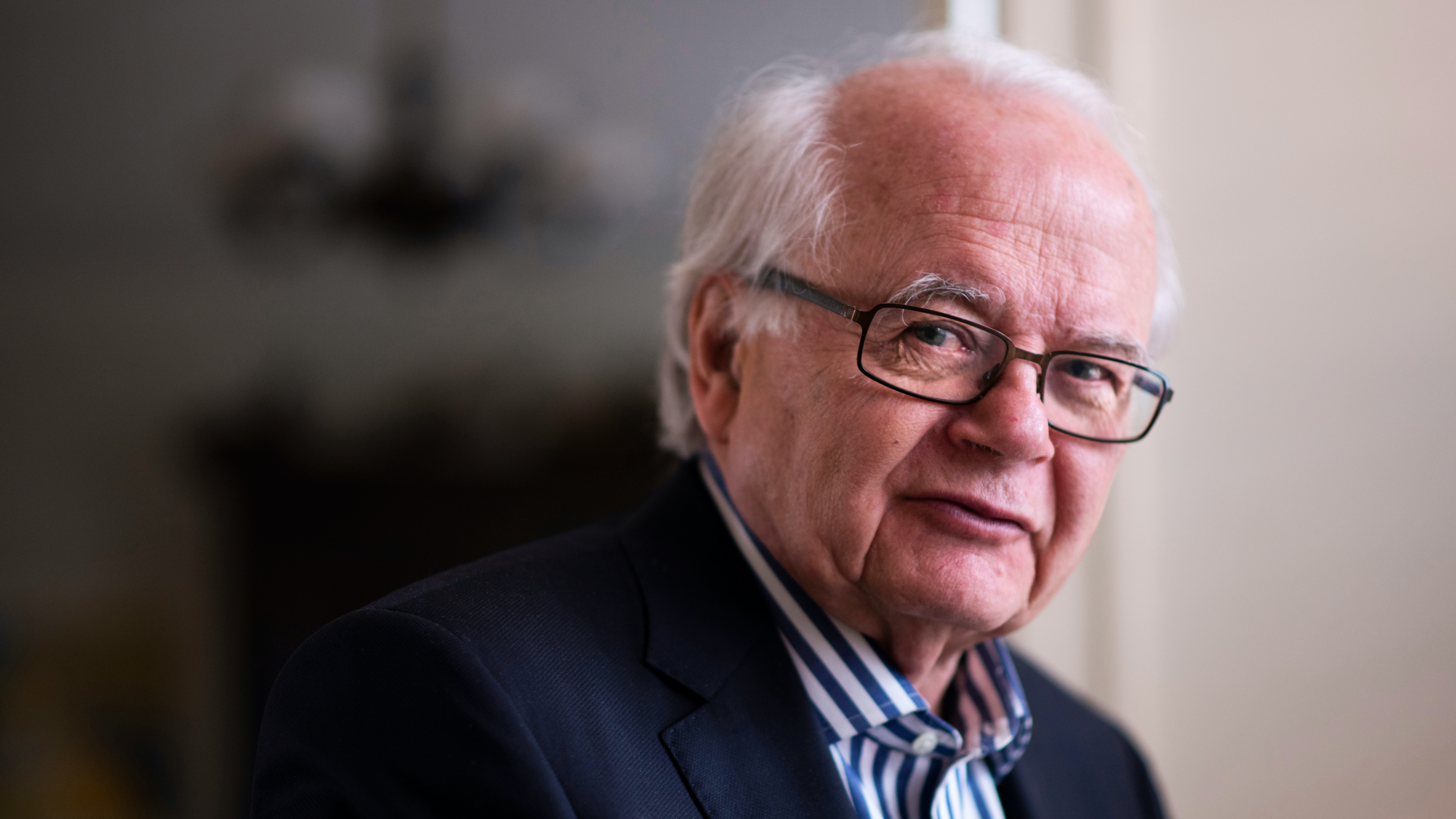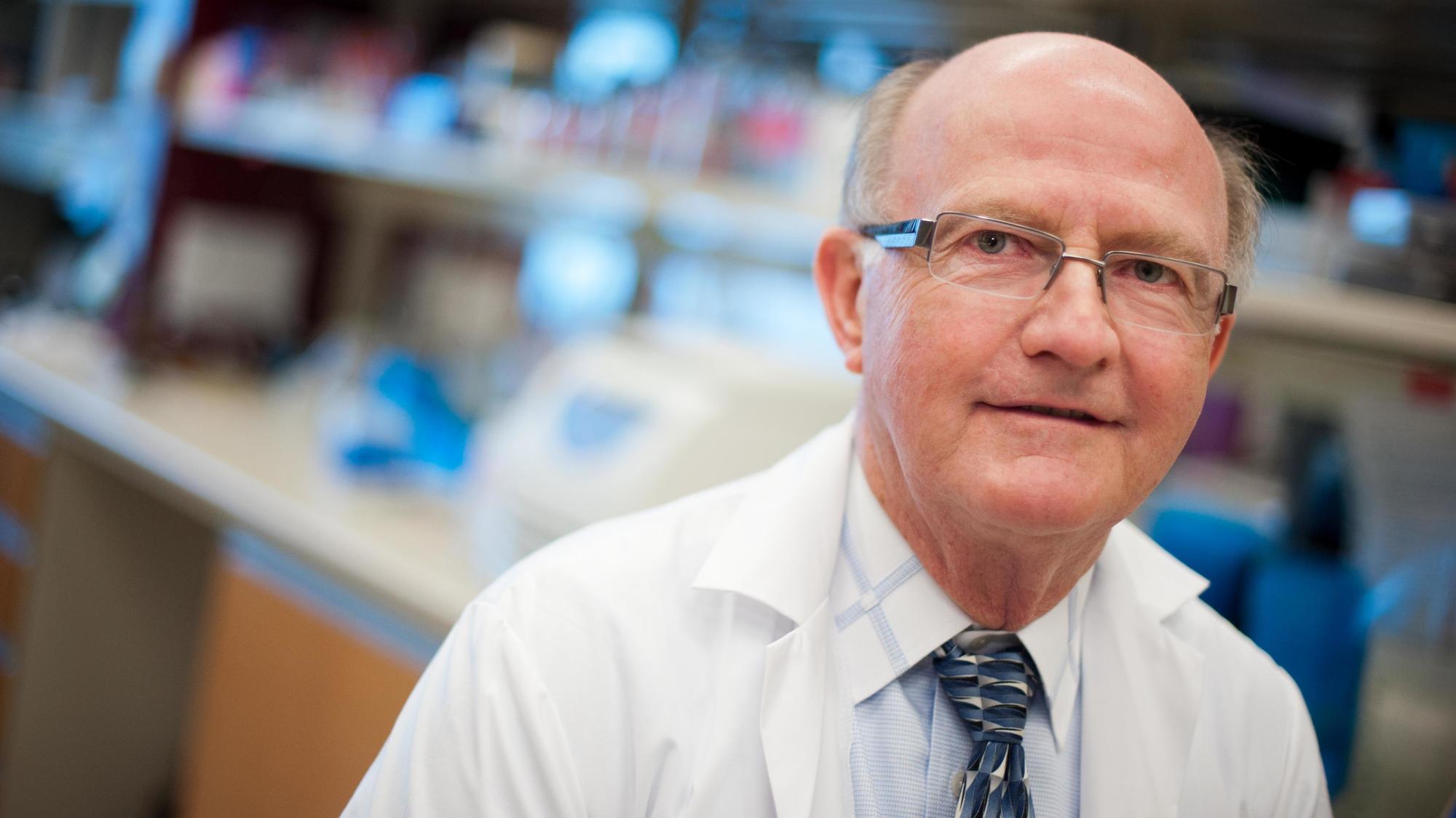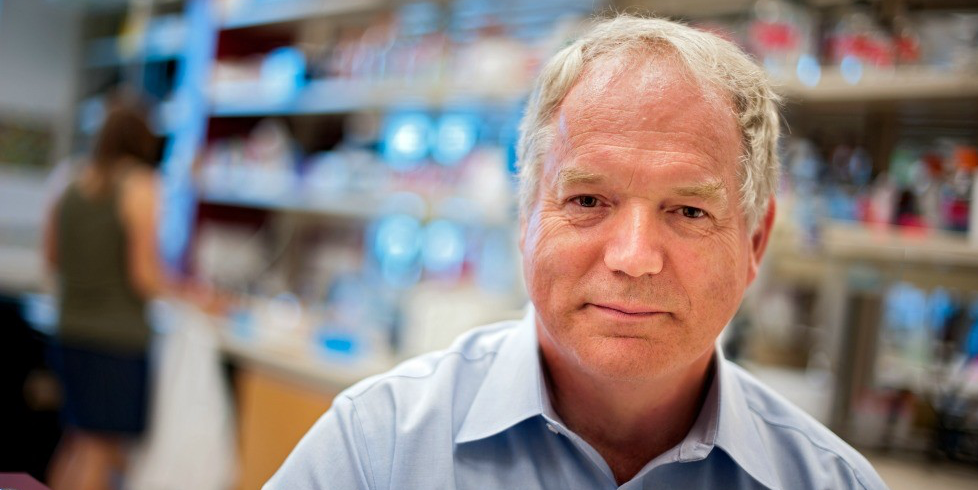When University of Alberta virologist Michael Houghton won the Nobel Prize in Physiology or Medicine this year, it was the culmination of three decades of work. From his co-discovery of the hepatitis C virus in 1989 to his ongoing quest for a vaccine, Houghton has helped save millions of lives. And for the U of A, which recruited Houghton 10 years ago to join a team of leading experts, it was the culmination of almost a century of work to build one of Canada’s top centres of excellence in virology research.
1908
The University of Alberta is founded.
1912
U of A medical school begins teaching undergrads who complete their clinical training at other institutions.
1921
The Medical Building comes to life thanks to a grant from the U.S.-based Rockefeller Foundation and eventually expands to a four-year program in the Faculty of Medicine.
1961
John Colter, ’45 BSc, is appointed head of biochemistry, attracting other young researchers to one of Canada’s first research programs in molecular virology. Among the students Colter inspires is D. Lorne Tyrrell, ’64 BSc, ’68 MD—the visionary behind what would nearly 50 years later become the Li Ka Shing Institute of Virology.

1987
U of A lands first major Canadian university contract with the pharmaceutical industry. Glaxo Canada funds Morris Robins and D. Lorne Tyrrell’s work to develop antivirals for hepatitis B, the most common liver disease in the world.
1987
U of A hosts the International Congress of Virology in Edmonton, a first for Canada.
1993
Glaxo Heritage Research Institute for virology is launched with provincial, foundation and industry funding, opening the first high-containment research labs in Alberta. New faculty such as HIV expert Lung-Ji Chang and immunologist/dermatologist John Elliott, ’80 BMedSc, ’82 MD, ’87 PhD, are recruited.
1993
Clinical trial of lamivudine, the first oral antiviral agent for hepatitis B, is first reported at the American Association for the Study of Liver Diseases in Chicago.
1994
Hepatitis B patient receives a successful liver transplant led by Norman Kneteman, ’78 MD, ’85 MSc, at the University of Alberta Hospital and is treated with lamivudine to prevent infection of the transplanted liver. This surgery is a first of its kind worldwide.
1995
The department of Medical Microbiology & Immunology is created through the merger of Medical Microbiology & Infectious Diseases and the Immunology department, with James Smiley joining as chair two years later.
1995
Biological scientist Linda Reha-Krantz publishes on how DNA polymerases make errors and thus cause mutations in viruses.
1995
Microbiologists Grant McFadden and Michele Barry publish on how poxviruses evade the body’s immune system.
1998
Glaxo receives Health Canada and U.S. FDA approvals for lamivudine. Hepatitis B is the world’s ninth leading killer, with four million new cases each year.
2000
Microbiologist James Smiley publishes on how herpes simplex virus triggers and then overcomes the body’s immune response.
2000s
Thanks to major grants and donor support the U of A is one of the top Canadian centres for research in virology.
2001
Norman Kneteman, David F. Mercer, ’92 BMedSc, ’94 MD, ’00 PhD, and D. Lorne Tyrrell develop the first non-primate animal model to support hepatitis C virus replication. The KMT mouse also works for hepatitis B and malaria and was first reported in Nature Medicine in August 2001.
2007
Lorne Babiuk joins the U of A as vice-president (research). An internationally acclaimed virology researcher who developed six vaccines over the course of his career, he is best known for his work to fight rotavirus, leading to the creation of a vaccine for children that saves an estimated 500,000 lives per year.

2007
A team of researchers led by David Evans, ’78 BSc (Hons), ’82 PhD, is awarded federal and provincial funding for the pan-provincial Alberta Institute for Viral Immunology, which is eventually folded into the new Li Ka Shing Institute of Virology.
2008
The antiviral lamivudine is the number one prescribed drug in China due to the prevalence of hepatitis B there, inspiring Hong Kong businessman and philanthropist Li Ka-shing to support virology research in Edmonton.
2010
The Li Ka Shing Institute of Virology opens, uniting an internationally recognized group of researchers studying herpesviruses, flaviviruses, retroviruses and poxviruses, as well as adenovirus, influenza A, hepatitis and rubella virus, with an aim to reduce the burden of viral disease around the world.

2010
Michael Houghton joins the U of A as Canada Excellence Research Chair in Virology. As part of the university’s commitment to the federal program, two new Canada Research Chairs are recruited, David Marchant and Maya Shmulevitz, ’96 BSc (Hons), reflecting the next generation of virology researchers.
2011
The Li Ka Shing Institute team tackles one of its first global problems, helping to disprove a new theory that a retrovirus called xenotropic murine leukemia virus-related virus (XMRV) causes chronic fatigue syndrome.
2012
The U of A’s Biosafety Level (BSL) III high-containment facility opens, one of the most advanced facilities of its kind in Canada, designed for research with pathogens that cause serious or potentially lethal disease, including what is eventually identified as SARS-CoV-2, the virus that causes COVID-19.
2013
The Applied Virology Institute, a unique commercialization arm of the Li Ka Shing Institute of Virology, opens under the direction of Michael Houghton, seeking to diversify the economy by turning research discoveries into profitable pharmaceutical products. By 2020 the applied institute is developing several treatments ranging from a hepatitis C vaccine to a cancer therapy.
2016
Tom Hobman emerges as a world-renowned expert on Zika virus, which affects newborn infants around the world and threatens the 2016 Rio Olympics.
2017
David Evans and research associate Ryan Noyce create a synthetic horsepox virus using a published genome sequence and DNA fragments. As the largest virus assembled using chemically synthesized DNA to date, it could lead to the development of a more effective vaccine against smallpox.
2018
Michael Good, along with Michael Hawkes, ’01 MD; Greg Tyrrell, ’85 BSc, ’88 MSc; Michael Houghton and D. Lorne Tyrrell, leads a clinical trial for a vaccine against Group A streptococcus, an invasive skin fasciitis that disproportionately affects Indigenous communities and can lead to serious heart problems.
2018
Clinical virologist Jutta Preiksaitis publishes on how Epstein-Barr virus affects organ transplant patients.
2019
Neurologist Jack Jhamandas, ’74 BSc, ’76 MSc, and a team from the Li Ka Shing Institute of Virology use computer modelling and artificial intelligence to discover a new small-molecule drug that is under development to treat Alzheimer's disease.
2019
Matthias Götte and colleagues demonstrate how the broad-spectrum antiviral drug remdesivir works against the Ebola virus.
2020
COVID-19 rapid response begins and U of A researchers are ready, receiving funding support for 181 projects on topics ranging from promising new antiviral drugs to the psychological impacts of the pandemic and how to counter the epidemic of coronavirus-related misinformation.
2020
April/September
Matthias Götte demonstrates how the antiviral drug remdesivir works against coronaviruses including SARS-CoV-2 in cells. Remdesivir becomes the first antiviral drug approved for the treatment of COVID-19.
2020
June
David Marchant and his team publish work in Nature identifying the entry receptor for respiratory syncytial virus, a pathogen that kills between 150,000 and 200,000 people every year, mainly children and infants.
2020
August
Joanne Lemieux publishes on how a feline antiviral drug works against SARS-CoV-2 in cells. The drug heads into Phase 1 clinical trials.
2020
September
Maya Shmulevitz publishes research that helps to narrow down which strains of reovirus would be most effective in fighting breast cancers.
2020
October
Michael Houghton is awarded the Nobel Prize in Physiology or Medicine.
